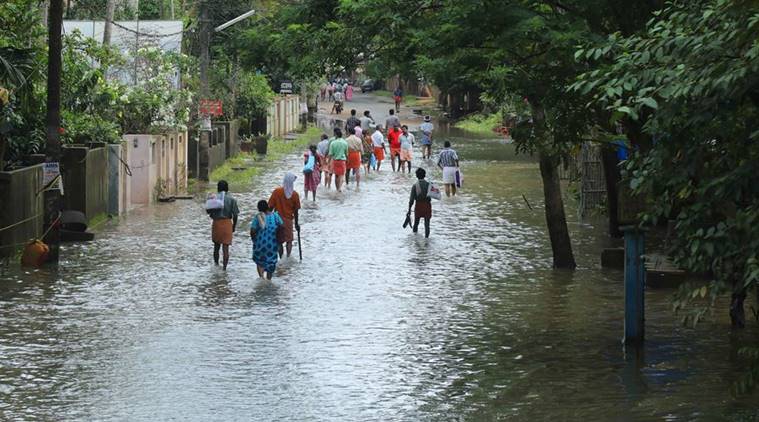 According to CWC sources, the situation may have been better if the capacity of the lake was larger. (Express Photo by Nirmal Harindran/File)
According to CWC sources, the situation may have been better if the capacity of the lake was larger. (Express Photo by Nirmal Harindran/File)
Congestion in the carrying capacity of the Vembanad Lake, the largest lake in Kerala, which could only absorb a fraction of the water that drained into it from overflowing rivers made the Kerala floods starker, the Central Water Commission (CWC) has found.
This severely inundated districts such as Kottayam and Allapuzha, a senior CWC official told The Indian Express. The Vembanad Lake was able to absorb only 0.6 billion cubic metres (BCM), of the 1.63 BCM caused due to excessive rainfall and inundated over 480 sq km and inflated to nearly three times its size.
“High rainfall during this period and lack of reservoirs in the upper reaches of the rivers that drain into the lake, worsened the flooding,” the official said. The CWC has now suggested increasing the capacity of the spillway through which rivers such as Pamba, Manimala, Achenkovil and Meenachil drain into the lake and the barrage through which the lake spills into the ocean.
According to CWC sources, the situation may have been better if the capacity of the lake was larger. “The capacity of the lake might be less due to the siltation which is a natural process, and there could have been backflow because the outlet was unable to discharge as much into the ocean. This is a coastal lake which also interacts with the backwaters. One possibility was the dredging of the lake but since it is an eco-sensitive zone, dredging was not recommended,” said the CWC official.
In its first analysis after the Kerala floods, which claimed at least 480 lives and caused widespread damage, the CWC has squarely put the blame on two spells of intense rainfall during the month of August — a two-day-period over August 8-9 and later a three-day-period over August 15-17.
Over 50 per cent of the rainfall received between August 1-19 fell over a three-day period, said official sources.
With management of dams in Kerala at the heart of the debate over its purported role in causing last month’s floods, the CWC has suggested a review of rule curves of all large reservoirs in the state – to ascertain how much water should be released when reservoirs reach certain levels. This, the CWC official said, is even more essential for dams with live storage of over 200 million cubic metres.
The recommendation from the apex technical body in India for water management comes a few weeks after Ministry of Earth Sciences secretary Dr. Madhavan Nair Rajeevan had said that not just in Kerala but there was “no scientific dam water management across India.” “As per my understanding, no big reservoir has a decision support system. So we don’t know when to open them, how to open them. ,” he had said.
According to the CWC, the dams “neither attenuated the floods nor aggravated them,” the official said. Sources told The Indian Express that the flooding conditions may not have changed drastically even if the water in reservoirs was much below Full Reservoir Level, due to the “severe storm conditions.”
Specific to the Idukki dam, CWC sources said: “Idukki dam absorbed much of the runoff and the outflow from the dam was less than inflow during the intense spell of rainfall. So, it did act as a flood cushion.” Gates of 35 dams in Kerala were opened in August to deal with the massive inflow, with the Kerala State Electricity Board Limited coming under criticism for its oversight.
It is learnt that the rainfall runoff generated during these intense spells was so high that the flood moderation effect of the dams was restrained. The topography of Kerala too contributed, said official sources, with the travel time of the runoff in the catchment area barely a couple of hours long before the water reached the reservoirs.
The CWC official said that review of rule curves for reservoirs was essential based on historical data which will determine how much water should be released each month over the monsoon period. “Most of Kerala’s reservoirs are small barring a few,” the official said.